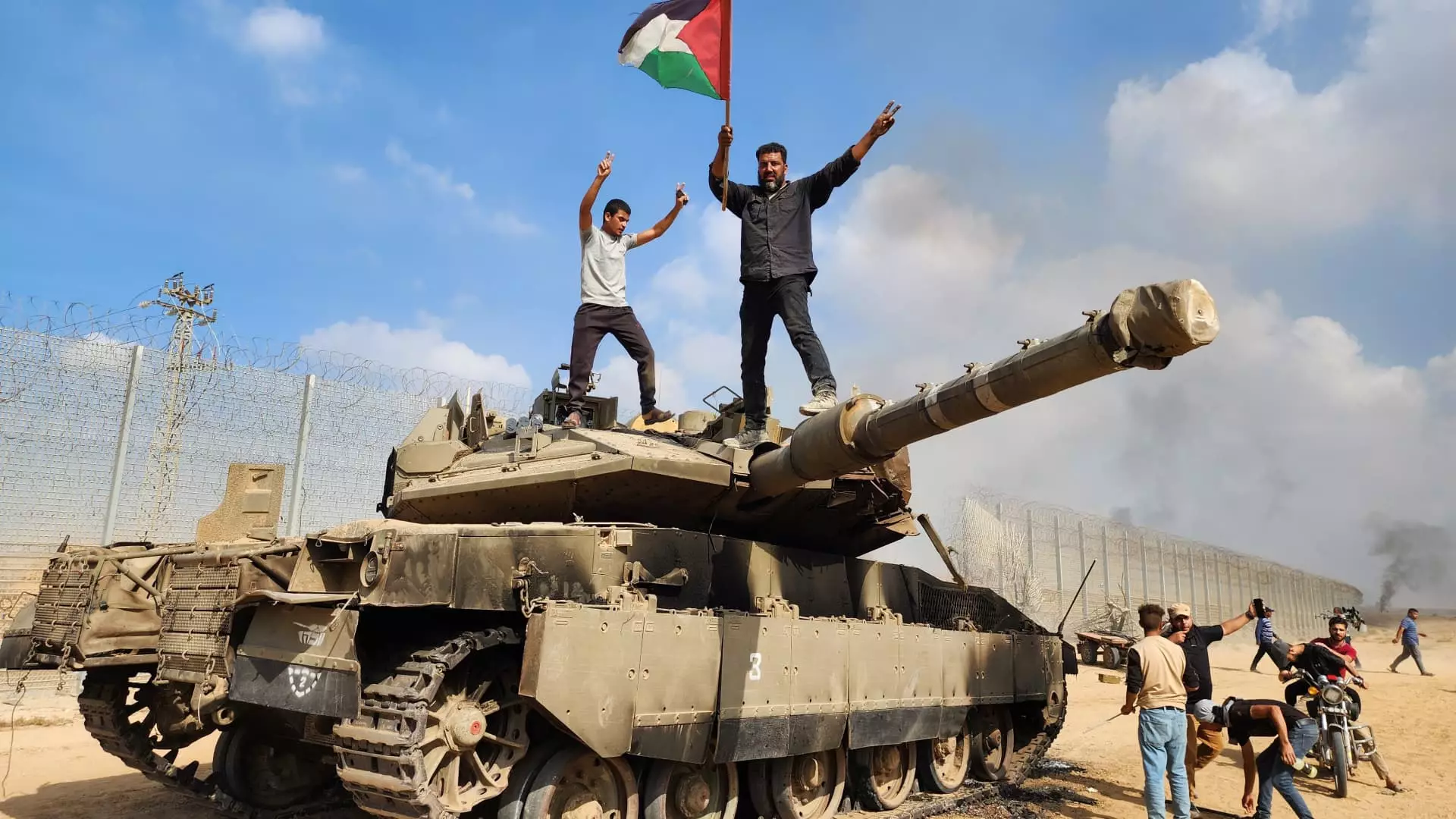Israeli forces clashed with gunmen from the Palestinian group Hamas in a deadly exchange that shocked the world. This surprise attack by the militants resulted in approximately 500 casualties, marking it as the deadliest day of violence in Israel in the last half-century. The conflict escalated further as fire from Lebanon crossed into northern Israel, an act claimed by the armed group Hezbollah in solidarity with the Palestinian people. In response, Israeli forces launched artillery strikes into Lebanon and conducted a drone attack on a Hezbollah post near the border. This violent clash between Israel and Hamas has significant implications for the region and threatens to undermine efforts to establish regional security alignments and Palestinian statehood aspirations.
The conflict began with Hamas fighters launching a massive barrage of rockets into southern Israel, providing cover for a multi-pronged infiltration of fighters into Israel from Gaza. This infiltration, the largest in decades, resulted in the killing of at least 250 Israelis in clashes throughout the day. The militants also managed to escape back into Gaza with dozens of hostages. In response, Israel launched retaliatory strikes, causing significant casualties in Gaza. The scale of this violence on both sides is devastating and serves to escalate tensions further.
The consequences of this clash are dire, with hundreds of lives lost and thousands injured. Israeli forces continue to conduct operations in multiple areas around Gaza, further endangering civilian lives. The Palestinian Red Crescent reported that Israeli targeting resulted in the death of 18 people in Gaza’s Beit Hanoun district, including 20 children. Palestinian health officials reported a total of 256 civilians killed and close to 1,800 people wounded. The indiscriminate nature of the violence is a cause for concern and raises questions about the proportionality of Israel’s response.
The conflict between Israel and Hamas is not limited to Gaza; it has spread to other areas as well. Hezbollah, an Iran-backed group, launched a rocket and artillery attack on Israeli posts, including a radar site in the Israeli-occupied Shebaa Farms, further escalating tensions. Israel responded with artillery fire into southern Lebanon. The involvement of other actors in the region raises the stakes and creates a complex web of conflicts that could have far-reaching consequences.
The clashes between Israel and Hamas come against the backdrop of surging violence in the Israeli-occupied West Bank. The region has witnessed increased Israeli raids, Palestinian street attacks, and assaults by Jewish settlers on Palestinian villages. This violence exacerbates an already challenging situation and raises doubts about the prospects for peace. Palestinians living in refugee camps for decades, coupled with Israeli policies and continued blockade on Gaza, have created a volatile environment that breeds resentment and fuels further violence.
The international community, led by the United States, has condemned the attack and called for de-escalation. President Joe Biden emphasized Israel’s right to defend itself but also issued a warning to Iran and other countries not to exploit the situation for their advantage. Western countries have been actively working towards normalizing ties between Israel and Saudi Arabia, a move that Palestinians fear could undermine their aspirations for statehood. Demonstrations in support of Hamas have erupted across the Middle East, with flags set on fire and protesters expressing solidarity with the Palestinian cause.
The surprise attack by Hamas on Israel caught the country completely off guard, leading to one of the worst intelligence failures in Israeli history. It is deeply concerning that a nation known for its intensive infiltration and monitoring of militants failed to anticipate such a significant threat. This failure not only undermines Israeli security but also raises questions regarding the effectiveness of their intelligence apparatus.
The clashes between Israeli forces and Hamas have resulted in an unprecedented day of violence, leaving hundreds dead and thousands injured. The conflict has far-reaching implications for regional security and the aspirations of both Palestinians and Israelis. The international community must work towards de-escalation and finding a peaceful resolution to this longstanding conflict. The devastating toll on lives and the failure of intelligence underscore the urgent need for a comprehensive approach towards peace in the region. Failure to address these issues will only perpetuate the cycle of violence and further erode any hopes for a lasting solution.


Leave a Reply